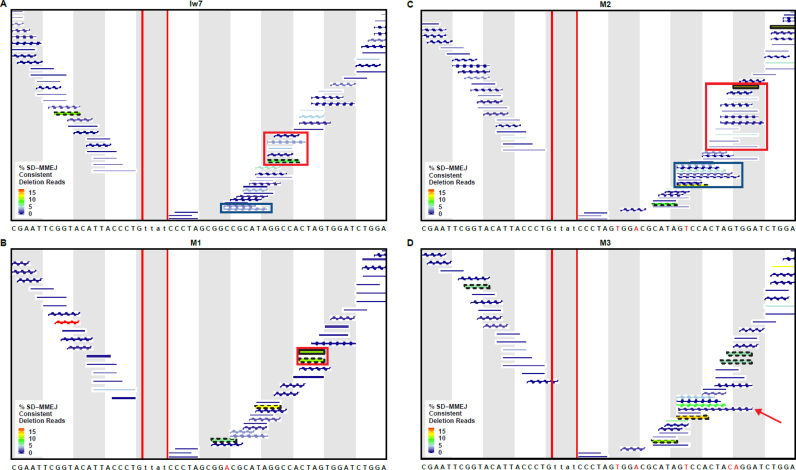Figure 6.
Changes in I-SceI flanking sequence influence the secondary structures utilized during SD-MMEJ repair. Individual repeat motifs in SD-MMEJ consistent deletion junctions, with their relative prevalence indicated by color. Percent SD-MMEJ consistent deletion reads was calculated by dividing the total number of reads for each repeat motif by the total number of SD-MMEJ consistent deletion reads. Repeat motifs corresponding to loop-out mechanisms are indicated by straight lines, while snap-back mechanisms are indicated by hatched lines. Red vertical lines indicate the TTAT/AATA overhangs produced by I-SceI. (A) The red box highlights snap-back synthesis products utilizing a GGCC direct repeat, while the blue box highlights loop-out synthesis using the GCGG/CCGC inverted repeat. (B) The red box highlights a CTAG repeat motif created by both snap-back and loop-out repair mechanisms. (C) The red box highlights repeat motifs resulting from snap-back synthesis utilizing part/all of a 6 nt TCCACT/AGTGGA inverted repeat or an 8 nt CTAGTGGA direct repeat. The blue box indicates repeat motifs resulting from snap-back synthesis using part/all of a 9 nt CTAGTGGAC/GTCCACTAG inverted repeat. (D) The arrow indicates a repeat motif with a CAGG microhomology that anneals with CCTG on the left side of the break.

